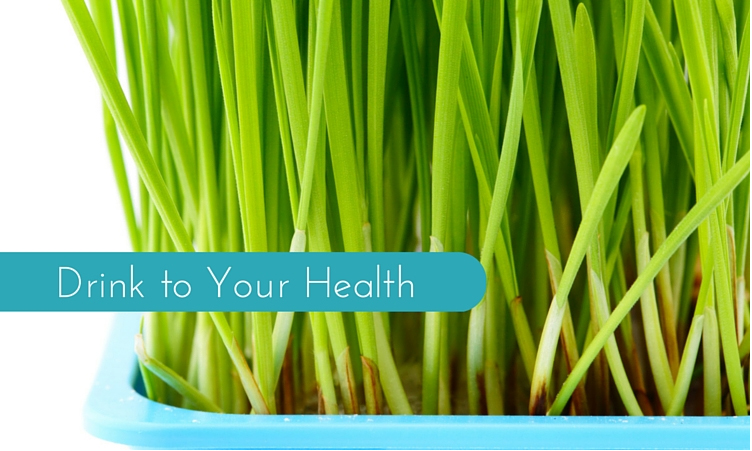Ever wonder what grass tastes like? What it would be like to juice and drink it? Well, I’m not talking about your garden-variety blue grass or zoysia. I’m talking about the superfood wheatgrass!
Wheatgrass is a variety of grass that is used for its therapeutic and nutritional properties such as blood purification, liver detoxification, colon cleansing, and of course healing cancer. It’s one of the most chlorophyll rich foods in the world (70 percent chlorophyll), which means it is incredibly nutritious and supports your immune system.
Chlorophyll is often referred to as “the blood of plant life” as it closely resembles the molecules of human red blood cells. The difference between hemoglobin and chlorophyll is that the central atom in hemoglobin contains iron, whereas the central atom of chlorophyll contains magnesium. It is the iron in wheatgrass juice that helps the blood carry healing oxygen to all the cells.
Superfood Status
Wheatgrass is known as a superfood because it provides relatively high amounts of protein (amino acids), vitamins (rich in vitamins A, C and D), minerals, lecithin, and more than 80 living enzymes. Here are some of the key benefits of wheatgrass:
- Wheatgrass is 70% chlorophyll, which is the first product of light, and therefore contains more light energy than any other element.
- It rebuilds the bloodstream and improves the integrity of red blood cells.
- Chlorophyll neutralizes toxins in the body.
- It improves blood sugar problems and is great for blood disorders of all kinds.
- Wheat grass juice may cure acne after being ingested for 8 months.
- It acts as a detergent in the body and is used as a body deodorant.
- Wheatgrass improves digestion, high blood pressure, and can help remove heavy metals from the body.
- Wheatgrass implants (enemas) can heal and detoxify the colon walls.
- It is great for constipation since it is high in magnesium.
Freshly Juiced vs. Freeze-Dried
There is considerable debate on whether freshly juiced is better than freeze-dried wheatgrass. While the freshly juiced version has more enzymes immediately available, the freeze dried version is more concentrated. We suggest finding locally grown, organic wheatgrass if possible, but many of our patients do not have the right type of juicer to do it at home and don’t want to hunt down the local juice shop for that daily shot. They find a brand of freeze-dried wheatgrass meets their needs. The difference between the two is really in taste — the fresh juice has a pungent, sweet taste, while the freeze dried version is more earthy. Both options have health benefits, so give both a try and see what you like best!
4 Tips to Drink Your Health
Tip 1: Always drink wheatgrass on an empty stomach and then wait 30-45 minutes before drinking or eating anything else.
Tip 2: Begin with 1-2 ounces of fresh squeezed wheatgrass juice daily.
Tip 3: The secret to drinking wheatgrass juice happily (without nausea), is to gradually increase the amount as you become acclimated to it. Raise your dosage one ounce every few days or every week. If you have an illness and require therapeutic doses over four ounces, it must be taken rectally.
Tip 4: Don’t have the ability to juice wheatgrass at home? Consider a freeze-dried form like Amazing Grass Organic Wheatgrass, a high quality organic product.
Do you prefer freshly juiced or freeze-dried wheatgrass? Tell us about how it’s helping your health improve by tweeting @Hope4CancerMex or commenting on the blog.


